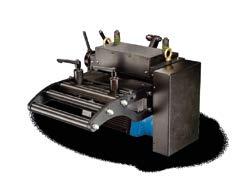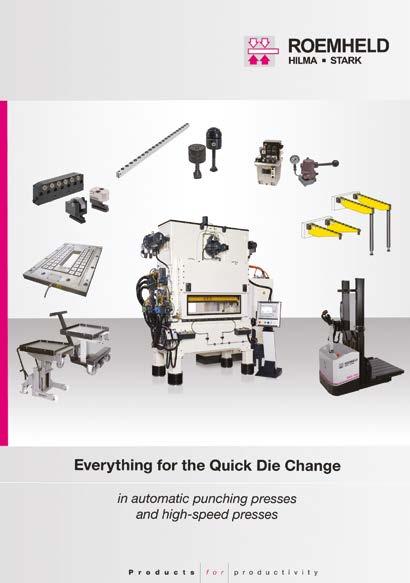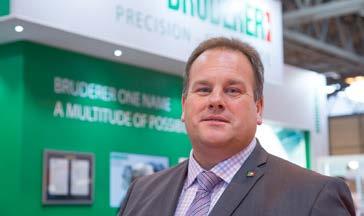October 15th 2019 • Stripping Force on the Slide
Loading of the tools is also critical, are they loaded by crane or fork lift onto Die Handling equipment, Electrically Driven Rollers for heavier tools, Die Carts & manually positioned Carrying Consoles.
• Ejection Force • Acceleration Force • Die Weight The press capacity is a key element along with the press operation e.g. stamping, deep drawing, high speed etc. are there any ejectors & what are their forces, stripping forces & acceleration forces for heavy tools or high speed presses.
Inside the press tools can be positioned using either Spring Loaded or Hydraulically operated Roller or Ball Bars which allow the movement of tools into the press bed.
With this information the total clamping force for the hydraulic elements can be determined. A general rule is to provide between 10%-20% of the total Press Tonnage as the clamping force on each bolster with obvious consideration for the forces mentioned previously. Once these forces are known the selection of the Hydraulic Clamping element can be advised to suit the required tonnage, fixing (T-slot or Tapped Hole) & permanently fixed to the bed or removable clamps to parking stations during the tool change process.
For the clamping of the Tools there are several parameters that need to be determined prior to the selection of the preferred Hydraulic Clamping element.
The last component for a SMED system is the hydraulic power unit. The system should be supplied with Machine Interlock which monitors the clamping pressure during the machine operation & should hydraulic pressure fall lower than 80% system pressure the press is brought to a controlled stop.
Control of the clamps can be via manual pendant control or via a separate control cabinet.
Safety circuits are built into the hydraulic system which in the event of hose or pipe break on either the top or bottom tools only 50% of clamps either top or bottom are effected. This allows for the press to stop but also maintain the position of the tools in both top & bottom slides.
18
CBM Health & Safety Meeting The meeting featured a presentation by Essel acoustics on Noise and Hand Arm Vibration (HAV). The main points on Noise were: 1. Operate a “Buy Quiet” policy for new equipment. 2. Make sure personal protection is appropriate and effective. 3. Beware of the danger of Over Protection. The example given was the recent tragic case of railway workers killed when they didn’t hear a train coming. 4. A growing awareness of the dangers of Ototoxicity where certain chemicals absorbed through the skin can affect hearing. The main part of the presentation discussed HAV. Over 47% of RIDDOR ill health reports from 20142018 involved HAV. Fines for HAV infringements were increased in 2016 sentencing guide lines to £500k+. They take into account not just harm but also risk of harm. The level of fines reflects the turnover of the business. Companies that have not yet got a HAV policy in place should start with health surveillance first with a risk assessment to focus on where the main risks lie.
When taking vibration measurements, they should be taken on the tool, not the glove or the wrist. When considering remedial action, it is more important to reduce the vibration rather than the exposure time. There is no effective PPE for HAV.
Risk assessments must be performed by a competent person. Risk should be assessed using the “The Control of Vibration at Work Regulations 2005.” Exposure depends of level of vibration and time exposed.
Alternative tools should be considered such as high frequency torque wrenches replacing impact wrenches.
Manufacturers of hand tools must supply acceleration data for their equipment and values are also published on the HSE web site.
Baseline examination of incoming employees hearing should be performed.
19





